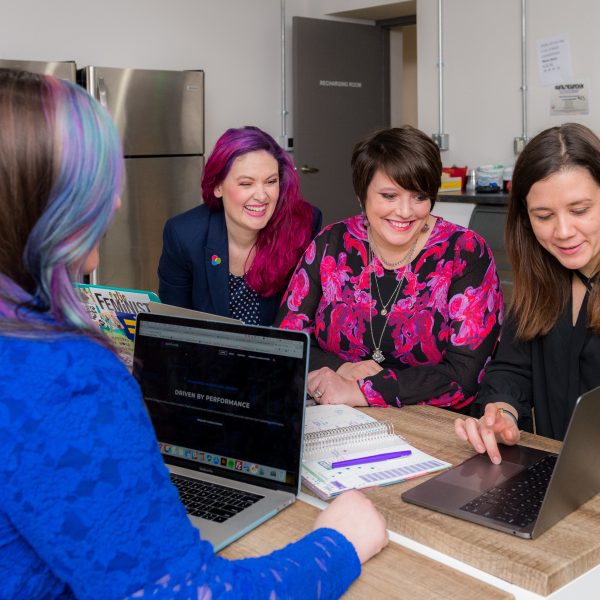One ECEC leader shares her story of coping with COVID-19

As rumbles of COVID-19, then known as coronavirus, began to be heard in the Australian early childhood education and care (ECEC) sector as families planned trips to China for Lunar New Year, most of the sector was unprepared for the cataclysmic shift which was to occur in coming months, seeing CCS overturned, a sector in danger of collapse, and unprecedented drops in revenue.
The Sector spoke to Sarah Louise Gandolfo, Centre Coordinator of Glen Waverley Children’s Centre (GWCC) to learn more about her experiences as a leader during the pandemic.
“We were educationally unprepared for COVID-19” Sarah Louise said candidly.
While emergency management plans and health and hygiene policies and procedures were in place, ready to help services to navigate the more practical aspects of managing a pandemic, little was ready to manage the fallout from a pedagogical perspective – after all, the sector hasn’t previously had to deal with an event of this magnitude.
As the number of children attending the service each day continued to fall, connection and engagement became priority number one. The service uses Storypark as their main communication tool, and while it was familiar and comforting for families, in terms of seamless communication on a regular basis, Sarah Louise quickly realised the need to have a “two way street.”
“One-way communications are never going to be effective at maintaining relationships nor were they going to support children and families in ‘home learning’. So we went back to thinking,” Sarah Louise said.
As the ECEC sector scrambled to respond to the changing landscape, social media was filled with suggestions about maintaining connections. Playdough packs, craft kits, games, collections of loose parts…all great ideas, but nothing which supported Sarah Louise in her quest to share with families the value of play based learning at home, during this unique opportunity for children to spend long amounts of time with their first and most important teachers.
“Before the school holidays I had a lovely parent, who was keeping her children at home by choice, offered to stop by and bring me a coffee. A welcome distraction from all that was going on, we sat together in a social-distancing manner in the foyer and got chatting. We shared our struggles with having children at home and needing to work, about the upcoming “home learning” programs primary schools were beginning to implement, and about what exactly that could look like for children under five” Sarah Louise shared.
“And then it hit me. We didn’t need packs. We didn’t need printouts and worksheets. We didn’t need to add to the burden that families were already experiencing. What we needed to show families was that what they were already doing with their children was of value and may only need to be slightly modified or enhanced to align with our curriculum.”
From here, the GWCC Learning from Home guidebook was born.
“My Assistant Coordinator and I worked tirelessly for two days to put together a guidebook for families that explained the benefit of learning through play, and how what we do in the long day care space could align with what families were doing at home. The book was sectioned into curriculum areas and gave clear examples as to how to assist children in achieving the VEYLDF Learning Outcomes in the home at any age” Sarah Louise explained.
Recruiting eight families from the service to trial the book over the Easter break, Sarah finalised the end work based on their feedback, sharing it will all families involved with the service – past, present and waitlisted.
“The results have been incredible!” she said, explaining that the guidebook not only supports isolating families to feel connected to the service as they engage in experiences in the home that the children would also experience here with us, it maintains that all important sense of connection and engagement.
To accompany the book GWCC have set up a new “room” on Storypark, which is specifically used to share links, ideas, videos and prompts for play-based learning in the home. Since creating the room, engagement with the online platform, as well as between families and the teaching team, has soared, with families posting images and videos of their children playing at home and kindergarten children sharing videos with each other to stay connected.
To others in the same position, Sarah Louise offers the following advice.
“Don’t add to a family’s workload. This is not about giving them extra things to do, but rather about making suggestions for play based learning that fit within a home learning environment”
“Also, be open and honest with your families. Let them know that you want to support them, but in order to do that, you need to know a little bit about what they want and need from you.”
Above all else, Sarah Louise said, make sure that you share resources, ideas and messages using a platform your families are already familiar with. Now is not the time to “reinvent the wheel”
More information about Storypark can be found here. For information about GWCC, please see here.
Popular

Policy
Economics
Jobs News
Provider
Workforce
Children’s Services Award changes finalised to address gender-based undervaluation
2025-12-12 06:58:10
by Fiona Alston

Provider
Workforce
Quality
Fair Work Commission confirms forced resignation grounds in case involving early learning provider
2025-12-08 07:30:23
by Fiona Alston

Workforce
Quality
Practice
Provider
Research
How one teacher is using Little J & Big Cuz to build empathy, understanding and confidence in First Nations learning
2025-12-08 07:15:19
by Fiona Alston















